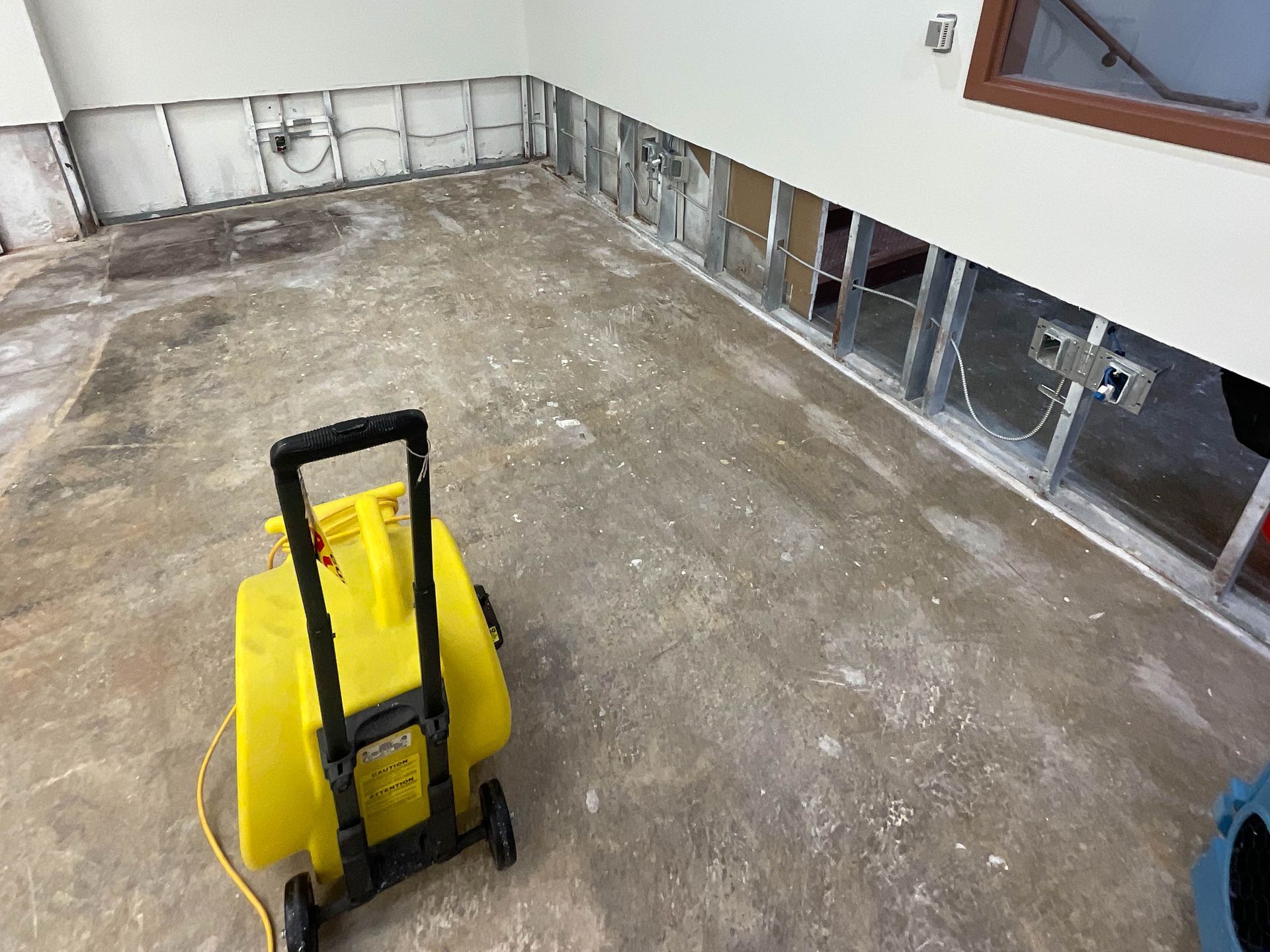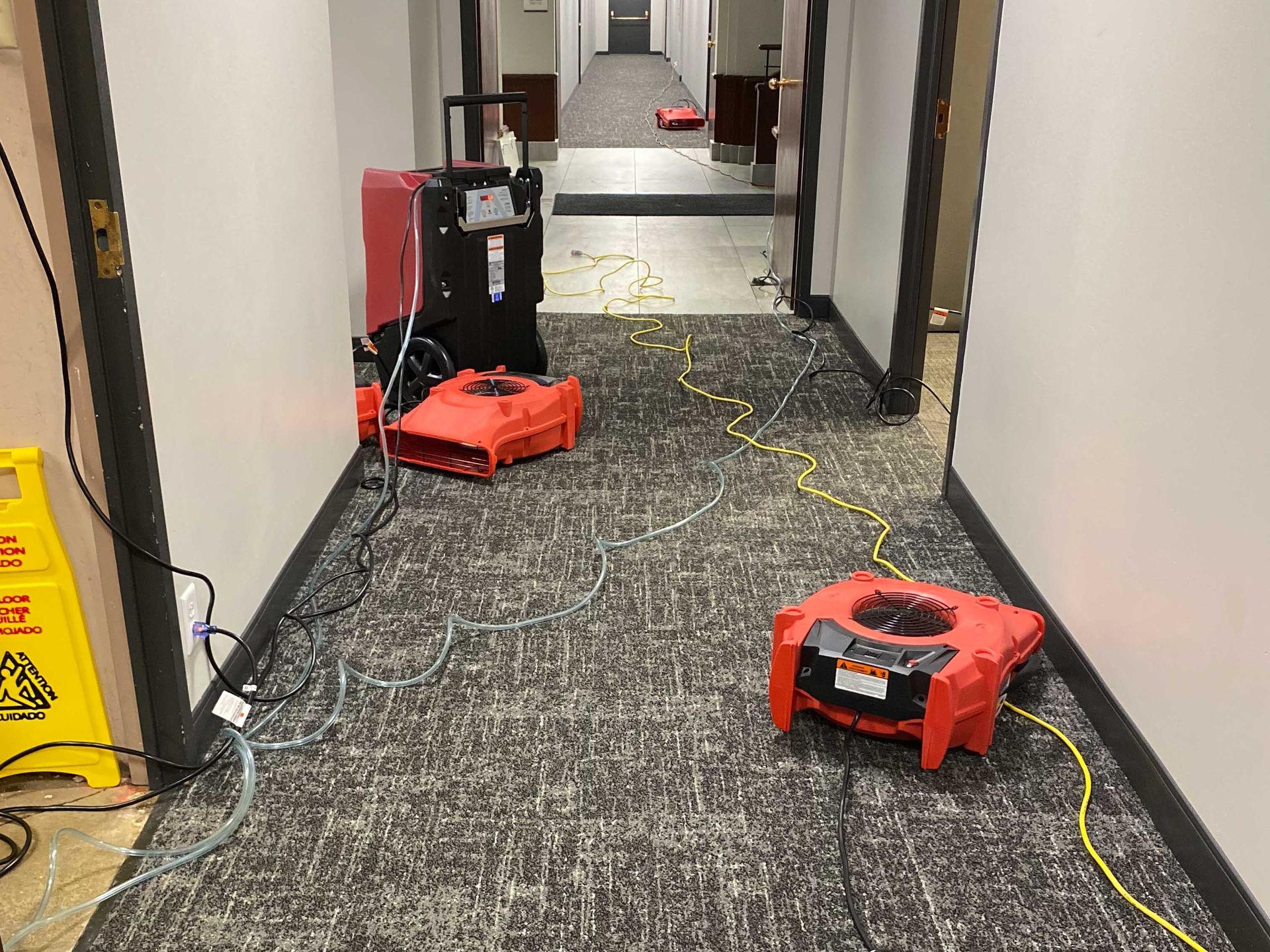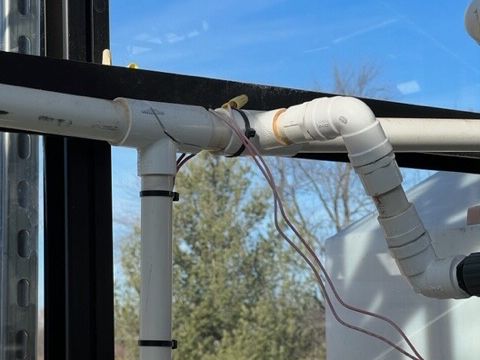Water Damage Restoration
Did a Pipe Burst and Send Water Everywhere?
Water damage from a burst pipe in a commercial or residential building can cause significant damage in several ways.
If the first floor is flooded, the water may damage or destroy flooring, carpets, and other floor coverings. Furniture, equipment, and inventory may also be damaged or destroyed.
Additionally, the water can cause structural damage to walls, ceilings, and other building components. In addition to the visible damage, water can also cause mold and mildew to grow, which can cause health problems and further damage to the building.
The building's electrical and HVAC systems may also be affected and need to be inspected, if not replaced. It is important to quickly address and repair the source of the water and then dry out the building and all affected materials as soon as possible to minimize the damage and prevent mold growth.
Get a free quote
Contact Us
We will get back to you as soon as possible.
Please try again later.

The Science of Drying
The Science of Drying is a field of study that focuses on the principles and techniques used to dry wet materials and buildings following water damage.
The goal of the drying process is to remove as much moisture as possible from the affected materials and structures to prevent mold growth and further damage.
W H Y H2O Damage Pros?
What Steps To Follow In the Science of Drying Restoration Process
Click Through The List Below To Find Out!
Emergency Response
This is the initial response to the water damage, which includes turning off the water source, removing standing water, and protecting the building and contents from further damage.
Water Extraction
The next step is to remove as much standing water as possible using specialized equipment such as submersible pumps and water extractors.
Drying and Dehumidification
The affected areas and materials are then dried using specialized equipment such as air movers and dehumidifiers. The air movers increase air circulation and evaporation, while the dehumidifiers remove moisture from the air.
Inspection and Monitoring
The drying process is closely monitored and measured with moisture meters, thermal imaging cameras, and other tools to ensure that the moisture levels are being effectively reduced.
Cleaning and Sanitizing
After the moisture is removed, the affected areas are cleaned and sanitized to remove any bacteria, mold, or other contaminants that may have been present in the water.
Repairs and Restoration
Finally, any necessary repairs and restoration work can be done to return the building and its contents back to their pre-loss condition.
Don't hire an amateur to do the job of a professional.
Hire a professional to help you navigate the damage restoration and insurance process.
You'll save money & gain peace of mind.
Having an Emergency?
We're available 24-hours a day, 7 days a week.
Location
1724 Westpark Center Dr Apt A, Fenton, MO 63026
info@h2odamagepros.com
Call
All Rights Reserved | H20 Damage Pros


